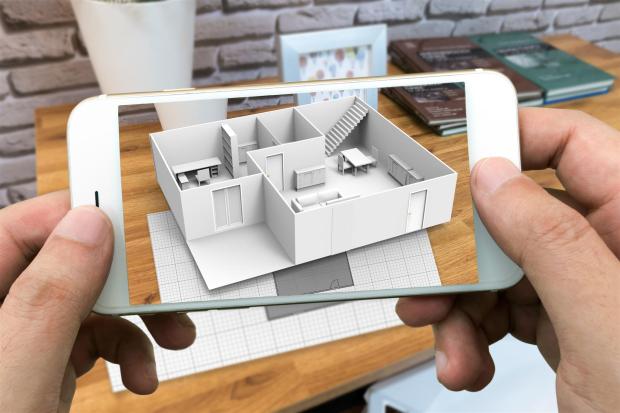How Lowe’s AR Bridges The Gap Between Real And Imaginary

 Buying and selling home improvement goods has long been a source of frustration for consumers and merchants alike. For shoppers, installing something only to dislike how it looks means having to dismantle and return it.
Buying and selling home improvement goods has long been a source of frustration for consumers and merchants alike. For shoppers, installing something only to dislike how it looks means having to dismantle and return it.
To solve this problem, many retailers are looking to utilize augmented reality (AR) to enhance the shopping experience. Home improvement giant Lowe’s, for instance, recently began leveraging AR to address timeless consumer problems, according to Josh Shabtai, director of lab productions at Lowe’s Innovation Lab.
“What we are doing is solving age-old customer problems, and oftentimes, in new ways,” he said. In a recent interview with PYMNTS, Shabtai explained why he and his peers consider their primary business to be solving real-world problems that their customers experience every day, and why the company maintains a “technology agnostic” philosophy.
Solving Customer Complications
The primary cause of consumer frustration surrounding home improvement shopping, Shabtai said, is a lack of project visualization.
“One of the biggest problems that anyone who has gone through a home improvement journey has experienced is the difficulty in visualizing something before you get started,” he said, noting that consumers often struggle to imagine how a product will ultimately fit with their decor.
AR tools can help alleviate this frustration because it gives customers an opportunity to see what all kinds of products — even large pieces, like furniture — might look like in their homes before committing to the purchase. In this sense, they allow customers to “try before you buy,” removing uncertainty from the equation. As a result, consumers become more confident with home improvement decisions, making them more likely to purchase products, boosting conversion rates.
“People have greater confidence when they preview a refrigerator in their kitchen, a grill on their patio or a couch in their living room,” Shabtai claimed, a fact reflected in the improved conversion rates Lowe’s observed after introducing a prototype AR tool to customers. The prototype showed consumers what a product might look like in their homes.
“We have seen some great results,” Shabtai said. “With some products, we saw conversion rates increase about 50 percent above what they were.”
AR could also add value to a customer’s shopping experience by functioning as a navigation tool. Lowe’s recently released an AR-based, in-store navigation app, Lowe’s Vision Navigation, which acts as an “indoor GPS.” The app provides customers with turn-by-turn directions for individual Lowe’s brick-and-mortar locations. Shabtai and his team noticed that customers using the app “were about twice as fast to make their way around the store than they were if they were self-guided.”
Gamifying The Retail Space
Beyond AR’s utilitarian appeal lies an element of whimsy and imagination, characteristics that appeal to customers’ playful sides by gamifying the shopping experience. Customers appreciate the practical benefits of being able to “try before you buy,” but they also enjoy seeing what the future might look like, were they to purchase any given item. In this way, AR allows customers to explore new, creative possibilities — without committing to expensive, frustrating purchases — by transforming the shopping experience into an experimental playground.
“We are all on the ground floor of augmented reality,” Shabtai said, adding that the retail industry has been “inspired” by AR-based games, most notably Pokémon Go.
Lowe’s AR tools appeal to the same creative sensibilities that are present in Pokémon Go and other games. In Shabtai’s words, the appeal is the ability to “see the level of immersion, and the ability to transform your understanding of the world. … You can bring fantasy into your everyday and believe it, and enjoy it.”
It comes as no surprise, then, that Shabtai has a background in video game design, which familiarized him with advanced AR.
“I feel like [AR technology in retail] has been a long time coming,” he said, comparing it to a band that has just reached mainstream status after coming out with its first hit single.
The Future Of AR In Retail
Now that AR tools have finally hit the mainstream, Shabtai believes there are great things in store for its impact on retailers, especially online sellers. As eCommerce purchases are encompassing a larger percentage of consumers’ retail spend, there is always the possibility that a product will look different in person than it did online. Shabtai thinks AR visualization can help change that.
“Being able to [use AR], to see lifelike replications of [things] in your home, changes the equation of online shopping,” he said. “I think, as these technologies mature, you will see greater comfort in [online] shopping in areas that people may not have been as comfortable with before.”
Shabtai expects that consumers will grow more comfortable with making clothing and home improvement purchases online as they gain access to additional AR tools. Whether customers are using it for navigational purposes, for project visualization or simply to imagine how buying a product might alter their homes and lives, there is added value in using AR in the retail space. For this reason, AR just may be here to stay.
